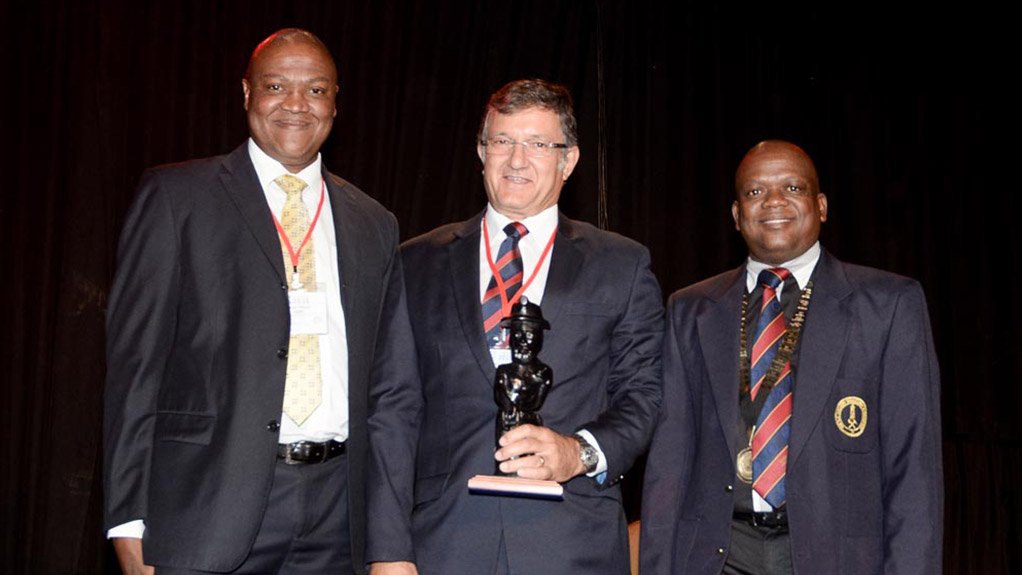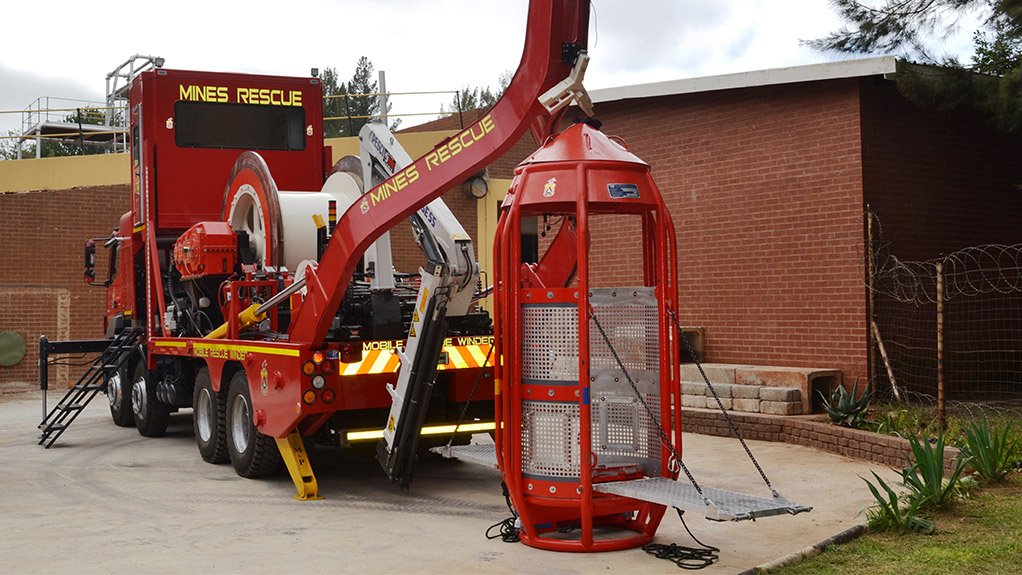Mining-focused rescue organisation Mines Rescue Services (MRS) is commissioning the “world’s deepest- reaching” emergency mobile rescue winder, specifically designed for MRS to accommodate the deep levels of South Africa’s mine shafts, MRS CEO Christo de Klerk tells Mining Weekly.
De Klerk says MRS started with the development of this equipment about four years ago as no rescue equipment that could reach the desired levels existed. He describes the rescue winder as a first of its kind worldwide, as South Africa boasts the world’s deepest mine shafts.
The manufacturing of the winder, which enables the rescue of five people a time from a depth of up to 3 100 m, was contracted to a local manufacturer.
MRS also has a smaller winder that can reach up to 1 300 m underground and is used in smaller areas, De Klerk notes.
Coalsafe Award
MRS was honoured in March with a Lifetime Honorary Award during the 2015 Coalsafe conference, which promotes health and safety in the coal mining industry, held in Johannesburg.
De Klerk has been at the helm of MRS since 1998, but his career in the mining industry started in 1979. He started volunteering in the rescue services in 1981. He says his family boasts a long history of mine rescue service, with his father having worked for the then Proto rescue team – which later became MRS – for 16 years and his brother having been part of MRS for 23 years.
“This is not a job, it is a passion – you want to save the lives of workers and protect the mine’s property. It is an honour for MRS’s work to be recognised at the Coalsafe conference. This is just emphasising the importance of the work that we do. Last year, we received the Lifetime Achievement Award at the Mining Lekgotla, which was awarded to Nelson Mandela two years earlier and it is, therefore, a great honour for us,” he states.
He adds that the Coalsafe award shows the coal industry’s appreciation of the daily work that MRS personnel and volunteers do.
“We are not there to be heroes, but to get a job done . . . so we go in, rescue employees and secure mine property from a hazard and get out.”
Other Coalsafe award winners include coal majors Glencore Coal South Africa, Anglo American Coal Operation South and BHP Billiton Energy Coal South Africa in the category of fatality-free businesses in 2014 with 10 000 or more employees.
About MRS
MRS trains volunteers to be rescue workers and administers a rescue scheme to provide rescue and recovery services, resources and expertise to the South African mining industry. MRS operates under the mandate of the Mines Health and Safety Act.
The company boasts several first-class pieces of rescue equipment at its four rescue stations in Steelpoort, Limpopo; Welkom, in the Free State; Evander, in Mpumalanga; and Carletonville, in Gauteng. The equipment includes Drager BG 4 breathing apparatus, body-cooling garments, rescue vehicles, thermal-imaging cameras, lifting equipment and ropes, as well as emergency mobile rescue winders.
“We have also designed a Rover orepass camera that can be lowered down when people are trapped underground to view the area in which they are trapped and plan ways of rescuing them accordingly,” says De Klerk.
New Rescue Drill Unit
De Klerk tells Mining Weekly that MRS last year launched new equipment for its rescue drill unit at a cost of R68-million. He says the US-manufactured Schramm drill and its ancillary equipment replaced the ageing Ingersoll-Rand T4 and T5 drill machines.
The Schramm T130XD drill has a pullback capacity of 59 t. Its mast can reach a height of 15.24 m, while its 711 mm casing advance system houses a Numa Superjaws drill bit. It has a standard hole-diameter, which uses a 660 mm Numa RC-210 hammer bit.
The drill unit’s three Atlas Copco XRVS617 compressors provide an output of 26.36 m3 at 25 bar, while booster pressure is provided by an Atlas Copco compressor with an output of 145.44 m3 at 69 bar.
Further, it is equipped with a Schramm load-safe system with automated
pipe-handler lift rods on the drill and a hydraulic on/off of pipe to rack. The Schramm T685WS drill has a pullback force of 42.5 t, while its mast can reach a height of 9.144 m. Its standard hole-diameter is 165 mm.
The collieries mobile rescue winder is mounted on a Mercedes-Benz-manufactured truck platform and uses 1 300 m of 13-mm-thick nonspin rope to lower and lift the rescue capsule. The winder is operated by a fully hydraulic motor with a maximum lift capacity of 1.5 t. The winder operates at 0.5 m/s and is equipped with a four-cylinder Perkins engine which can be used as a backup in the event of failure of the main drive system. The rescue capsule weighs 600 kg.
Edited by: Leandi Kolver
Creamer Media Deputy Editor
EMAIL THIS ARTICLE SAVE THIS ARTICLE
To subscribe email subscriptions@creamermedia.co.za or click here
To advertise email advertising@creamermedia.co.za or click here















